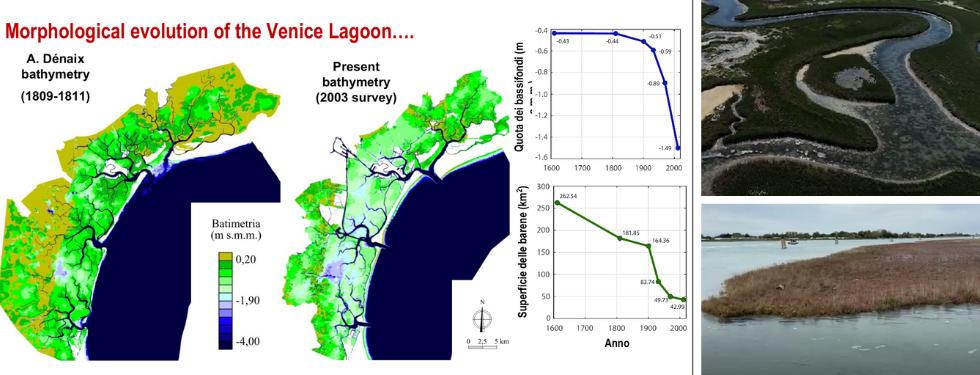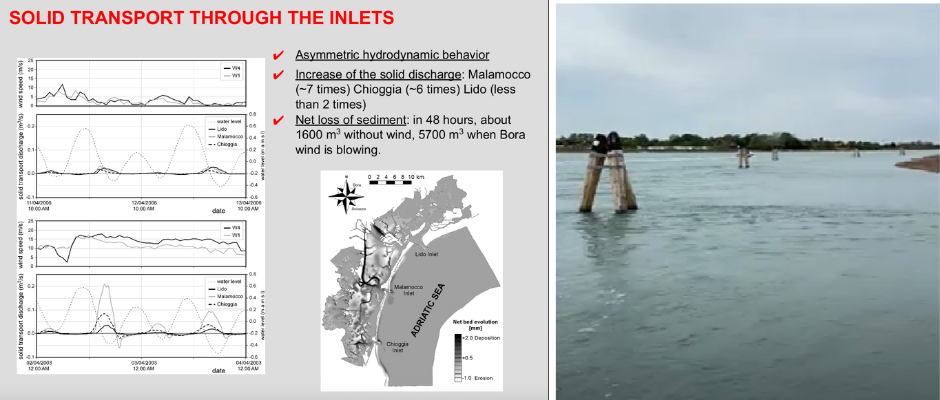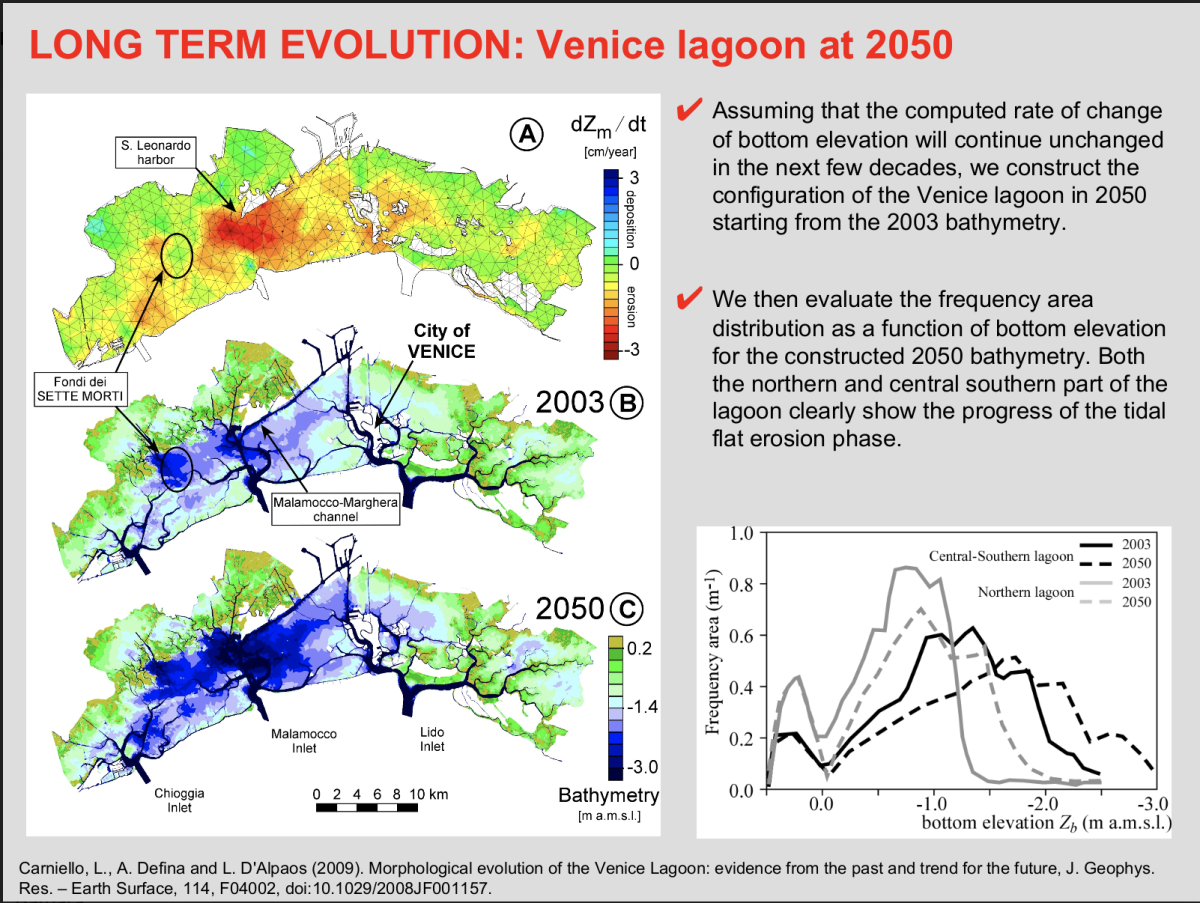Venice Lagoon: the tidal flats

In this episode of the series dedicated to the Venice Lagoon, we will be exploring the third morphological entity that characterizes these environments: after the salt marshes and the channel networks, we will be focusing on the tidal flats, areas that tend to be almost always submerged andwhich are covered or uncovered by vegetation.
Looking at any sequence of historical maps, it can be observed that tidal flats have undergone an important process of deepening in the last 150 years.
"There are essentially two processes that produce the morphological evolution of tidal flats: the effect of currents, but above all the phenomenon of wind waves and the consequent transport of eroded sediments from the bottom", explains Professor Luca Carniello of the Department of Civil, Environmental and Architectural Engineeringof the University of Padua who has been collaborating with Professor Andrea D'Alpaos of the Department of Geosciencesi n the line of research on the Venice Lagoon.
The marked tendency of the Venice Lagoon to export sediments during the ebb tidephase, according to a phenomenon called ebb dominance, leads most of the sediments to be captured by the currents, transported towards the mouths and expelled from the lagoon, causing a net loss of sediments and therefore a generalized deepening of tidal flats.

"An important role in protecting the tidal flats from erosive processes is played by vegetation, in the parts where it is present. The phanerogam meadows, in particular, are able to stabilize the seabed and for this reason it is important to promote their diffusion", Prof. Luca Carniello points out.
A positive effect of stabilization can also be produced by microalgae, called Microphytobenthos, which have the ability to secrete a gelatinous substance that protects the surface of the seabed and increases the possibility to withstand erosive effects.
It is also important to underline that the vegetated areas of the tidal flats contribute to the capture of CO2, although with lower rates than those of the salt marshes.
Shooting and editing by Barbara Paknazar
Aerial footage with the drone by Stefano Castelli

The previous episodes are available here:





